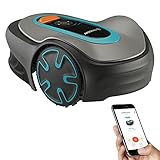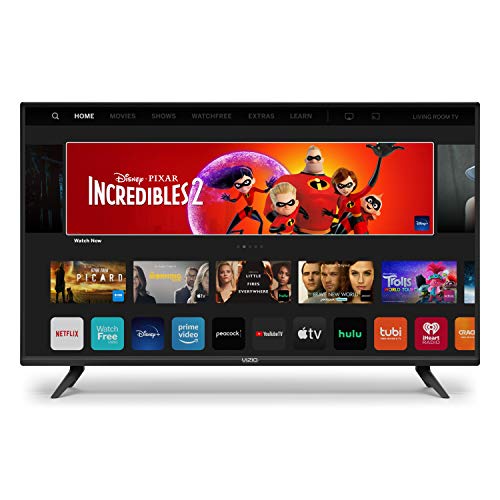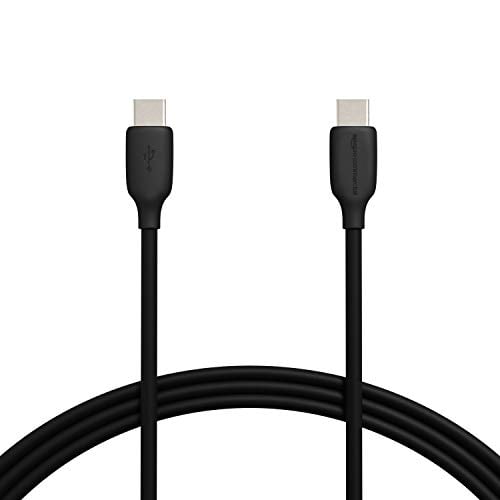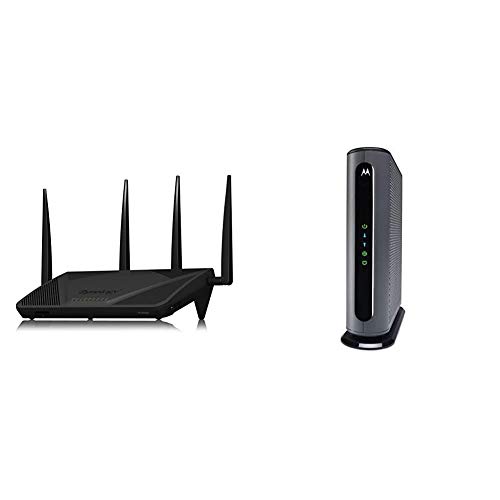Three popular HomeKit devices for the smart home
- Philips Hue: The quasi-standard for lighting
- EVE: Simply pair Thread socket with HomePod
- Ecobee: reliable heating control
The basics for the Apple smart home.



Smart home automation with Apple Home (previously called HomeKit) can be very convenient, but it can also bring some complexity. We’ve divided the products into blocks for a handy overview and recommend the best ones for you. In addition, there is a fold-out list for all available models. So you have a quick selection option and at the same time the complete overview.
Between the product blocks, we explain the technology and the connections. We also discuss which hubs you need if you don’t have any hardware at home and whether a stationary iPad is sufficient. There are explanations for everything, so that you can make a good decision yourself. And remember: there is no right and wrong, everything should be as you like it.
Which HomeKit smart plug to buy?
HomeKit compatible sockets are available for each wireless standard.
- Already Philips Hue in the house? Stick with it.
- Want Thread with the HomePod? Then buy EVE.
- Only on/off? WiFi models from Meross are enough.
- Hue Zigbee compatible
- inexpensive, reliable
The Philips Hue socket runs via the Hue Zigbee hub and is therefore 100% HomeKit compatible. In addition, it is the best choice for everyone who already owns Hue devices: it is reliable, can be automated with the Hue motion detector within the system and is also inexpensive in comparison. So if you already have something from Hue, this socket is your first choice. In addition, the Hue model is one of the most compact and reliable.
- Thread compatible
- only HomePod necessary
If you would like to rely on the latest radio standard, then the Thread-compatible socket from Eve should be on the short list for you. So you only need one of the devices mentioned as a hub and you already have a mesh thread network. Due to the constant power supply, this socket also serves as a repeater in the network.
- only needs WLAN
- cheap and easy
If you don’t attach much importance to automation but just want to switch on a socket and don’t want to use another hub, then cheap WiFi sockets with HomeKit compatibility will do the trick. Prices have now fallen so far that individual copies only cost between ten and fifteen Dollars. If you retrofit a hub later, they can of course be integrated into automations.
I don’t want a hub!
The opposite can make sense.
Many try to keep the number of technical devices low and want a solution without an additional hub. But that’s ironic on the one hand, if you equip the house with lots of new devices anyway, and on the other hand, you can’t hold out.
On the one hand, your WLAN router is already a hub – it translates from wired Internet to WLAN. A HomePod mini or Apple TV 4K is also a hub: a network is created here for Bluetooth and Thread. Even with a minimal solution (not counting the WiFi router), you always have at least one device that works due to the necessary translation to the wireless standards of Smart Home devices: In the smallest variant, that would be the HomePod mini, which switches from WiFi to Thread (or . Bluetooth).
If you buy something from Philips Hue or Aqara, then a Zigbee hub is added, with Homematic IP, Bosch and Tado a bridge that transmits at 886 MHz. Is that negative or positive?
Our experience now speaks for an additional hub, for several reasons. These clearly outweigh the counter-arguments such as additional power consumption (a few watts) or “an additional box” (just hide it behind the router):
1. Sometimes already installed
Some of the hubs are already hidden in other devices: be it the Thread capability found in the HomePod mini and Apple TV 4K or the Zigbee 3.0 hub in the Aqara G2H Pro security camera. The device is there anyway – if it’s also a hub, why not?
2. Negligible effort
Usually the hub is simply plugged into the router and that’s it. The devices then connect to the hub more easily than WLAN devices to the router, because the router or the mesh system sometimes cause problems. In our experience, separating the systems with regard to the wireless standard makes setup easier rather than more difficult. All devices will appear in the Home app anyway.
3. Reliability increases
If you want to use a lot of automations, it makes sense to keep them within one system if possible. Apple still hasn’t polished HomeKit enough for it to be 100% stable. So it’s good if as much as possible comes from a manufacturer that cares better than Apple, such as Hue. Lamps can then be switched on and off via motion detectors or controlled according to the time of day without even having to rely on HomeKit automation. This is an important criterion for anyone who attaches great importance to stability.
In our experience, this also applies to the Aqara ecosystem. Here, however, you have to use the app, which then also communicates with Chinese servers. However, with HomeKit, errors occur in waves from time to time, so that all accessories directly connected to the HomePod mini are then affected at the same time.
4. More devices can be connected
If you really want to automate your house to a large extent, then there are a lot of smart home devices. The Hue Hub is already busy with 50 devices. Aqara Hubs can handle 64 or 128 devices. It is an advantage that all the thermostats in the house run separately, for example via the tado Bridge. The HomePod mini also shows that thread networks are not infinitely scalable. Especially if you concentrate on one manufacturer, you will eventually run into the limitations of the system itself.
5. Reality leaves no choice
It is currently impossible to buy all devices from one manufacturer. The big advantage of HomeKit is that all devices work together. And that is necessary because every company, no matter how many devices it has on offer, has a product focus. So you can get by with just one manufacturer if you only want to control a few things. In reality, you need at least two standards for a comprehensive smart home, and three for some flexibility.
Which HomeKit buttons/switches to buy?
HomeKit compatible switches with Zigbee, Thread, Bluetooth.
- Philips Hue offers different designs.
- Thread with the HomePod works with EVE.
- Meross switches are cheap.
- Hue Zigbee compatible
- with mounting plate
The Philips Hue button runs on Hue’s Zigbee Hub. It is not a dimmer, but can distinguish between single and multiple clicks. The battery is replaceable and in addition to the white plastic plate there is also an adhesive magnet so that it can be easily attached anywhere. Handy to have one under the table or on the sofa for adjustments.
- Aqara Zigbee compatible
- inexpensive
If you use the Aqara Hub, the Zigbee buttons from the same manufacturer can be considered. These are among the cheapest and you can stick them anywhere. In addition, the battery life is very long. The design is modern and unobtrusive. A good way to switch your smart home devices.
- WLAN compatible
- wall mountable
If you also want to use thread for buttons, you have to go back to Eve. This switch connects directly to a HomePod. The switch itself is intended for wall mounting. So very inconspicuous but perhaps less flexible than the first two.
You need at least two systems if you mean business
In this example, serious means: you want to switch on a lamp and a socket using a wireless switch, motion detector and door/window contact.
Door/window contacts are not available at Philips Hue and Ikea Tradfri, for example. At Aqara it is, but there is a lack of a wide selection in the lighting area. And this circumstance runs through all brands and product areas.
For example, an Aqara Gateway is very cheap for sensors. The Zigbee-based system is still affordable even with many sensors and switches. If you are still missing something, simply retrofit it: if it is perhaps just a thermostat, then buy a WiFi copy from Meross or one from EVE with thread.
If you already have a system, such as Philips Hue and a HomePod, and if data protection is also important to you, then you can combine the products of these two standards (Zigbee, Thread) and combine them into one system. Lighting, sockets and motion sensors from Hue and window/water sensor, cameras and thermostats from EVE.
In the overview table in the following block you can see which manufacturer covers which products. Based on the hardware you already have or your application scenario, you can then set priorities and fill in the gaps with other brands.
Which HomeKit lighting to buy?
Philips Hue is the unofficial lighting standard.
- Philips Hue offers an incredible selection of light sources and lamps.
- The selection for Thread products is still quite limited.
- WLAN lamps, e.g. from Yeelight, are cheap.
- Hue Zigbee compatible
- nice indirect light
The Philips Hue Iris is a lamp for indirect lighting. You place them on your shelf or sideboard and then align them so that they scatter their light over the wall. Due to the pleasant light scenes and the high brightness, you can immerse the whole room in pleasant light. It is surprising how much the indirect lighting has an influence on the atmosphere.
- WLAN compatible
- bright and rich colors
If you don’t value HomeKit-compatible lighting that much, but have a room that needs colorful lighting, LIFX is an option. The lamps can be connected directly via WLAN. In addition, they have a very high brightness and one of the best colors of all LED lamps. Very practical if you want to use the home network and also value good colors.
- Hue Zigbee compatible
- beautiful design and pleasant light
Filament lamps are very elegant, and the LED version is even more energy-efficient. With the Hue variants you can elegantly equip lamps where the E27 lamps are exposed – then you can see the elegant design of the Hue models particularly well. A little extra: the rest of the case is black and contributes to the elegant design.
Product focus of different HomeKit manufacturers
| Hue | Aqara | Eve | Meross | Tado | Netatmo | Bosch | Homematic | |
|---|---|---|---|---|---|---|---|---|
| Lights | yes | yes | yes | yes | no | no | no | no |
| Switches | yes | yes | yes | yes | no | no | yes | yes |
| Sockets | yes | yes | yes | yes | no | no | yes | yes |
| Motion Sensors | yes | yes | yes | no | no | no | yes | yes |
| Door/Window sensors | no | yes | yes | no | no | no | yes | yes |
| Water Sensors | no | yes | yes | no | no | no | no | no |
| Vibration Sensors | no | yes | no | no | no | no | no | no |
| Heating | no | no | yes | yes | yes | yes | yes | yes |
| Cameras | no | yes | yes | no | no | yes | yes | yes |
| Smoke Detectors | no | yes | no | yes | no | yes | yes | yes |
| Weather Stations | no | no | nein | no | no | yes | no | no |
| Garden Tech | no | no | yes | no | no | no | no | no |
| Wall mountable | yes | yes | no | yes | no | no | yes | yes |
| Door Locks | no | no | no | no | no | no | yes | yes |
| Garage Door | no | no | no | yes | no | no | yes | yes |
Which HomeKit motion detector to buy?
HomeKit compatible motion detectors enable automatic switching.
- A great addition to Philips Hue.
- Current version of EVE thread compatible.
- Aqara’s Zigbee version is slightly cheaper than the rest.
- Hue Zigbee compatible
- incl. brightness sensor
The motion sensor for the Philips Hue system in the Zigbee standard is one of the best extensions. The sensor not only detects movements, so that the light can be switched on automatically, for example, it also knows the current brightness so that it can be taken into account in the automation.
- Aqara Zigbee compatible
- very compact
The Aqara sensors have two advantages: they are cheap and compact. So if you need a lot of sensors and don’t want to spend a lot of money or want to install them as invisibly as possible, then the Aqara models are a good choice. The included battery can be replaced.
- Bluetooth compatible
- Thread version coming
The motion sensor from Eve with Bluetooth and can directly be connected to an Apple hub. The coming new version will also offer Thread support. Both are handy if you want to get by with an Apple hub as much as possible.
What goes with which hub?
Which HomeKit door/window sensor to buy?
HomeKit compatible door and window sensors are often a sensible purchase.
- EVE’s Thread Sensor is a classic.
- If you need a lot, Aqara should be considered.
- VocoLinc for separate installation.
- Thread compatible
- quite big
Eve offers Thread compatible door/window sensors. The design is quite large due to the included CR123 battery, but should also ensure a very long runtime. The price is quite high compared to the Aqara models, but the quality and reliability are at the top level.
- Aqara Zigbee compatible
- inexpensive
The Aqara sensors have two advantages: they are cheap and compact. So if you need a lot of sensors and don’t want to spend a lot of money or want to install them as invisibly as possible, then the Aqara models are a good choice. The included button cell battery can be replaced. In our experience, however, the running time is extremely long.
- Bluetooth compatible
- fair price
The VocoLink sensors are HomeKit compatible via a Bluetooth connection. They offer a low price point but a reliable detection.
Bosch, HomeMatic, Home Assistant?
Want more than one HomePod with a few connected devices? And you’re concerned that if you invest thousands of Dollars, things won’t run smoothly? The risk of doing this is actually quite high. There are enough reports that Apple still hasn’t quite got HomeKit under control.
So if you require stability, we would always use a solution with our own bridge. Bosch is a good choice here if you value HomeKit compatibility. HomeMatic IP is also highly recommended due to the large number of components and at least has the option of supporting Matter in the future, but it is not HomeKit-compatible. The question is, should that care? Once you’ve set up the heating, alarm system, etc., you won’t mess around with it using Siri anyway. And for the lighting you might still have Philips Hue anyway.
Perhaps you have also built a new one and had everything wired with KNX – then your engineer should give you a few more tips. Also a problem: Bosch and Homematic IP might not be available in your country and/or very costly.
The Home Assistant software is a great way to create your own smart home hub : It makes it possible to combine all standards in one solution and to create automations that are not possible in HomeKit. So it doesn’t matter whether it supports HomeKit, Amazon’s Alexa or Google Home: if the device communicates somehow, it can also be controlled, across all manufacturer boundaries.
The system can also be set up in such a way that no external server is required. You can only run it at home. If you want to get involved, you will get the almost perfect solution. Of course there are other interesting solutions.
Smart Home Software:
Which HomeKit thermostat to buy?
HomeKit compatible thermostats control your heating automatically.
- Ecobee: established.
- Kono: cool design
- reliable
The Ecobee thermostat is more or less a standard if you want to control your house HomeKit-compatible with Siri. The design is laid back an fits every surrounding and it also works reliably.
- cool looking
Kono has a more standing out design and is also not as long in business as Ecobee’s model. So this is your choice if you like new stuff and the design. Check for compatibility before installing it.
Smart home radio standards and protocols explained
If you want to use the most common type of radio technology, you can do so with sockets and light bulbs that can be connected via WLAN. This offers the advantage that you can simply continue to use the existing infrastructure and no further configuration steps are necessary apart from registering in the WLAN.
It’s also practical that you can simply add a hub like the HomePod mini later to carry out automations. Without a hub, you can simply switch the devices on and off via Siri. Alternatively, an iPad can also be used as a hub if you don’t use a thread.
The disadvantage is that you have to update the devices manually – and if there aren’t any security gaps in the devices can also cause problems for the rest of the network.
Also limiting: if there are a large number of WLAN devices, your router has to keep up and the response time can decrease.
Thread is the name of the new connection standard which, together with the Matter protocol, will represent the future of the smart home. Thread refers to the radio standard, such as WLAN, for example. Since this is an independent radio technology, a hub – at Thread this is called a border router – must always be available. The big advantage of Thread is that it creates a mesh network in which the devices pass on the signals to each other.
There are currently two border routers from Apple: the Apple TV 4K and the HomePod mini dominate Thread. End devices are currently only available from a few manufacturers, EVE for example or NanoLeaf. So if you want to get into the smart home now, you can’t fully rely on Thread, because there are simply hardly any devices for it.
Thread is the new mesh radio standard and is in line with WLAN, Bluetooth and Zigbee.
Matter, on the other hand, is the communication protocol used, which the end devices must be able to understand. They are not dependent on Thread: Matter devices can also be connected to the network via WLAN or even via cable. This fact is interesting for existing installations such as Hue or Aqara, which work with a hub: There, compatibility with Matter is retrospectively established for some devices that are already on the market, but only for the bridge. From the bridge, Zigbee and the old protocol are still used. And why not: it works really well too.
However, Matter should not mean that all devices are compatible with each other. Ideally, of course, yes, but we assume that there will be distortions, as with Zigbee, that it does not necessarily work across manufacturers. Security cameras that want to save their recordings in Apple’s iCloud via Secure Video must continue to be HomeKit-compatible, because a class for security cameras is not defined in the new standard.
The question arises, where are devices with Bluetooth? With HomeKit, Apple relied on two well-known radio standards: WLAN and Bluetooth 4 LE. That’s good and bad at the same time. It is cheap and simply furnished. The disadvantage is that the Bluetooth devices do not transmit very far, for example a house often causes problems because the Bluetooth standard used cannot mesh.
It is also practical that WLAN and Bluetooth devices can work together with an iPad as a control center. In this case, however, you will have to do without Thread Update under iOS 16 and of course you will not be able to use Thread-based devices with an iPad as a hub in the future either.
But don’t worry about existing installations: border routers that can handle Thread can also use Bluetooth. From now on you can equip your network with modern Thread devices and simply continue to use the Bluetooth devices. As before, they are simply controlled separately from the HomePod – logically still with a limited range.
Zigbee is a radio standard that is a bit older, but has found the ideal application in the age of IoT. It is very energy efficient and has mesh functionality. This means that the individual devices can forward the signals to each other, so not every single element has to be in the radio range of the hub. This is practical in larger apartments and houses, where the switching signals are simply passed on without having to resort to another Zigbee hub, for example. However, one is always necessary, but this also controls the automation functions.
But be careful: just because a manufacturer uses the Zigbee standard does not mean that they are compatible with a manufacturer who also uses Zigbee! Different implementations are often used.
In the meantime, however, it is possible to use Ikea and Hue lamps on the other hub and Ikea lamps on the Aqara hub. So the compatibilities will be expanded, but you should first check (or ask) what the current status of development is.
If such a system is advertised as HomeKit-compatible, it should work. The connected sensors and lamps are then made available to the HomeKit system via the hub in the network.
The hubs and systems from Ikea, Philips and Aqara mentioned can also be integrated into a professional system with Home Assistant. Hue and Aqara have also announced that they will support the Matter Protocol with an update.
The 868 MHz technology is used by bridges that want to achieve a long range. Since the frequency is lower than that of WiFi, the signal is not attenuated as much and has a longer range.
Brands that use this technology include Tado and HomeMatic IP.
Which HomeKit water sensors to buy?
Wassersensoren can protect against expensive water damage.
- Maximum coverage? EVE.
- Minimal cost? Aqara.
- A compromise? Fibaro.
- good detection with a long sensor cable
- Thread compatible
The water detector from EVE is a bit more expensive, but has two major advantages: it can handle Thread and thus runs directly on the HomePod mini. And for water detection, a longer cable is used that can be laid over a larger area. In this way, every leak is guaranteed to be detected.
- Aqara Zigbee compatible
- attractively priced
The Aqara sensors are so cheap that you can easily set up several sensors in an area to be monitored. Remember that you need an Aqara Hub for the connection. But even with the hub, the most favorable warning in the event of a water leak
- Bluetooth compatible
- good sensor pins on the bottom
The Fibaro variant comes in a high-quality housing with the sensor pins on the underside. If you stand in the water, you immediately sound the alarm. The connection is made via Bluetooth and therefore also runs on an iPad as a control center.
I already have… What do I buy now?
The best: they are not expensive at all and expand the control of your smart home very easily.
Ecobee offers reliable solutions here – control units are available for almost all A/C systems.
Which HomeKit Smart Lock door lock to buy?
Auomatically unlock the front door via HomeKit.
- Nuki is the most reliable.
- A separate bridge is usually necessary.
- easy to install
- reliable
The Yale gets very good reviews and is easy to install. In addition to the HomeKit connection you also get a keypad for manual code entry.
- very small
- works as deadbolt
The Level Lock is very small and looks nice. Be aware that is works as a deadbolt, so check before installation if that is suitable for your door.
- works as deadbolt
- fair price
The Level Bolt also works as a deadbolt and is therefore fair prices. If you have the need for it, you also buy a package with an additional keypad.
How long does it last? Is it safe? Is it stable?
You are on the safe side with HomeKit devices: Even if the manufacturer goes bankrupt and there is no longer a cloud connection, the devices can still be controlled locally. An excellent regulation from Apple that will serve to be able to use the devices until they actually give up the ghost of their own accord. It should be even better with the new Thread devices: since the open standard is manufacturer-independent, devices that can no longer be controlled at some point are a rarity (updates for any security gaps are not taken into account).
When it comes to security, you should make sure that ideally you have a second WiFi network for devices that represent your smart home, so that a hacked light bulb does not allow access to your work computer. Or you only buy things that come with a bridge and are regularly updated by the manufacturers, such as Hue, tado, Bosch, HomeMatic, or that are directly attached to the HomePod mini via a thread, such as EVE. You should keep in mind: Nothing is 100% secure, but separate networks, high-quality products and regular updates help to keep the risk small.
Can you fully rely on the automations? From our own experience we can say: Absolutely not. We have automations that sometimes don’t work at all, sometimes they just turn on or don’t turn off again. That’s not so bad with things like the lighting, even if the light is on for three weeks while on vacation. But under no circumstances should you, for example, switch on fan heaters or other devices that could pose a serious safety risk unattended. Think carefully about what you want to control without supervision. If something goes wrong, in the best case only your electricity bill will increase, in the worst case the place will burn down.
Which HomeKit garden tech to buy?
Water the garden or now the lawn? No problem.
- Gardena offers high-quality garden technology.
- Want your thread with the HomePod? Then buy EVE.
- With Netatmo you can document the weather.
- good quality
Gardena offers good technology for the garden that is compatible with a Bridge HomeKit (currently not available in the US). Not only the water control is very reliable, but also the lawn mower robots. These come at a price, but get the job done with no problems. If the garden is your thing, you should reach for Gardena.
- Thread compatible
The EVE Aqua connects directly to the HomePod mini. Although mechanically more reliable than the previous model, it is still not 100% reliable. If this is going to be your only gardening tool – buy it. Otherwise look at Gardena.
- good App
If you are interested in the weather and want to create statistics, you can use the Netatmo weather station. This allows the wind speed to be measured and recorded.
Estimated life cycle: HomeKit devices should be able to be used until the hardware gives up. The advantage is that Apple has designed the HomeKit standard in such a way that the devices can also be controlled when there is no internet connection. This is an advantage if a manufacturer goes bankrupt and any control via the cloud is no longer possible. The limiting factor is then no longer taking place security updates – for this reason we generally advise to operate all smart home devices in a separate WLAN.





























































































































